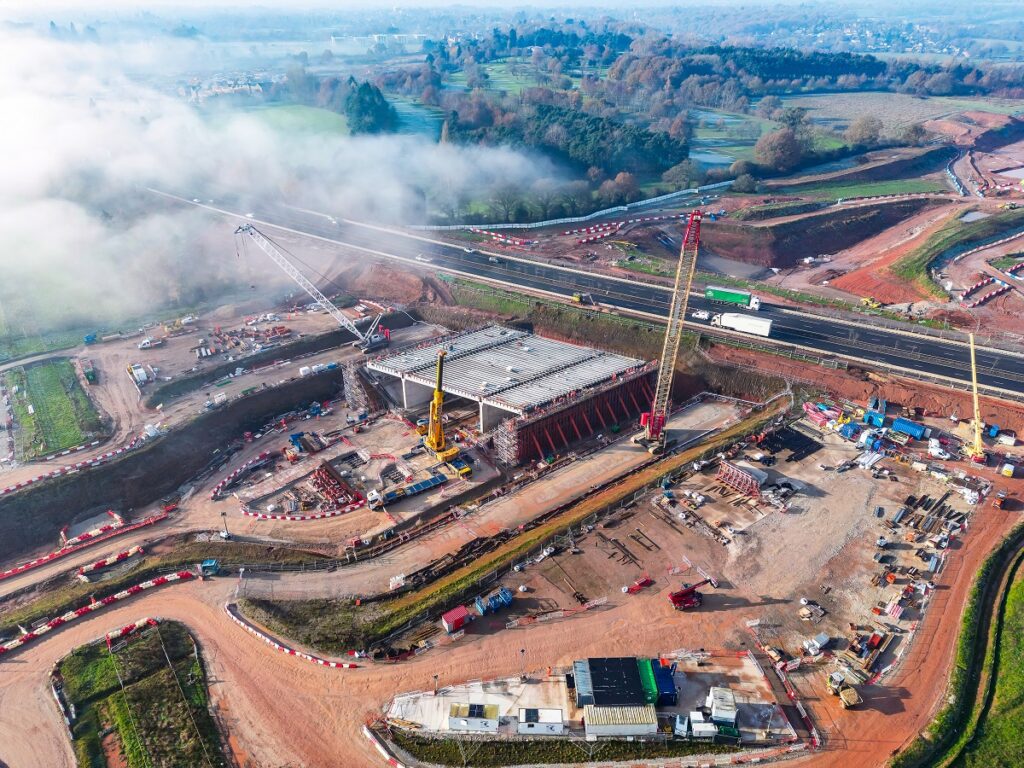Motorists in Warwickshire are celebrating as the busy A46 Kenilworth Bypass reopened last night, a full 30 hours ahead of schedule, following a major operation by HS2 engineers. The closure was necessary to allow the installation of a colossal 14,500-tonne concrete box structure beneath the road.
The immense box, weighing the equivalent of two modern Royal Navy destroyers, is believed to be the heaviest of its kind in Europe. Once fully integrated, it will enable high-speed trains travelling between London and Birmingham to pass underneath the dual carriageway as they approach the new Interchange station near the NEC.
This engineering feat is one of over 200 significant bridges and viaducts being constructed as part of the HS2 project. The high-speed railway aims to improve connectivity between London, the West Midlands, and the North, while also freeing up capacity on existing mainline routes for more freight and local services.
HS2’s design team opted for a box structure that could be built adjacent to the road and then slid into its final position in a single operation. This innovative approach avoided an estimated two years of speed restrictions and lane closures that would have been required with a more conventional bridge construction method.
The intricate three-stage operation was spearheaded by HS2’s primary works contractor, BBV – a joint venture between Balfour Beatty and VINCI – in close collaboration with National Highways. The timing of the work was strategically planned to coincide with lighter traffic volumes during the school Easter holidays.
Cameron Thompson, HS2 Ltd’s Head of Delivery, expressed his admiration for the achievement: “It’s amazing to see the A46 box in position and I’d like to thank everyone who’s worked so hard to get the road open early. This record-breaking slide could not have been achieved without the years of meticulous planning and preparation that the team put in, working closely with our supply chain and National Highways.”
He added a note of caution for drivers: “While the vast majority of the bridge is now complete, we’ve still got a few weeks’ of lane closures to finish the central reservation and wingwalls – and I’d like to thank drivers in advance for their patience during these works.”
The initial phase of the project involved the demolition of a 200-metre section of the old road and the excavation of approximately 35,000 cubic metres of earth and sandstone, which was then stockpiled for later reuse.
The second stage saw the 42-metre wide structure carefully pushed into place over a ten-hour period. Specialist engineers employed an innovative jacking mechanism called Autoripage, developed by Freyssinet, to move the box along a guiding raft at an average speed of 6.5 metres per hour, covering a total distance of 64 metres. Fifteen powerful jacks were used to precisely guide the box, allowing for millimetre-level adjustments to its direction. Bentonite, a clay-based material, was injected into the space between the box and the ground through a series of holes in its base, acting as a lubricant to facilitate the sliding process.
The final stage involved the careful reconstruction of the road embankment and the reinstatement of the new carriageway, allowing the A46 to reopen to traffic around midnight last night.
While the road is now open, one lane in each direction will remain closed until Thursday 31st July 2025 to allow for the completion of the central reservation and wingwalls.
Victoria Lazenby, National Highways Regional Director, highlighted the benefits of the chosen construction method: “Our concern with any scheme is to minimise the impact for people using or living near our roads and certainly such a huge, complex engineering feat as this would inevitably bring some disruption.”
She continued, “So to have avoided two years of lane closures and speed restrictions on one of our key routes is tremendous news. After many years working closely with HS2 and their supply chain we are delighted to see all of that planning and preparation come to fruition. We are grateful to people for their patience during the road closure to enable this innovative work to take place.”
John McNiffe, Project Director at Balfour Beatty VINCI, who leads the team responsible for the bridge delivery, said: “We’re extremely proud to have successfully delivered the UK’s heaviest bridge slide across the A46 in Warwickshire. It’s a huge achievement for the dedicated project team who’ve worked tirelessly over the last two years to reach this point.”
He concluded, “My team has worked around the clock, using innovative construction methods to move this bridge into place and return the road back to normal in just 18 days, reducing the impact on road users significantly.”
Elsewhere in the West Midlands, progress continues on the Delta Junction, which will connect trains into Birmingham city centre, with the first deck of the River Tame West Viaduct recently completed. In London, two massive tunnelling machines have also recently finished excavating the five-mile-long Northolt tunnels. The HS2 project currently employs around 31,000 people, both directly and through its UK-wide supply chain.






